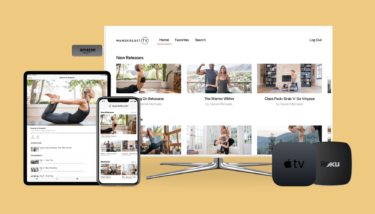The OTT business model is a flexible way of offering online content to paying members and subscribers that lets them access it in multiple ways – from web to mobile and TV apps. Think Netflix, Disney Plus and the range of different streaming platforms available at your fingertips.
OTT stands for Over-The-Top. It means streaming video through the internet to multiple devices instead of accessing it via traditional cable TV. Viewers can pick and choose what they want to watch and when, and creators can control what content they want to publish, and how viewers can watch it.
OTT monetization is different from trying to make money on YouTube or other social media platforms because subscribers are paying money directly to you. You are the one in control here, instead of having to rely on external monetization methods like ads, sponsorships and having to liaise with other platforms.
The 5 Types of OTT Monetization
First, let’s take a look at the different monetization models available with an OTT business model:
- AVOD: Advertising video on demand
The AVOD model works by having video content freely available to stream with adverts placed throughout. Users aren’t paying to access the content, instead, they’re putting up with the inconvenience of watching ads in exchange for free content.
YouTube is the biggest example of AVOD. It works well because it’s such a large platform, and relies on having that volume of users engaging with videos to generate advertising revenue.
For creators, this revenue model works by advertisers buying space for ad-supported video. While it can be a good option to start making money from your videos without asking users to pay, it does mean having to align with the guidelines of your advertisers and meeting their expectations with the number of views your videos get.
- SVOD: Subscription Video-On-Demand
The SVOD business model is where users have unlimited access to stream video content in exchange for a recurring monthly fee. Popular streaming services like Netflix and Amazon Prime Video fall into this category.
Due to the popularity of subscription-based models, this is increasingly the kind of experience people expect. Indeed, recent data shows that 99% of households in America have at least one subscription to an OTT service and it’s expected that the number of active subscriptions will reach 450 million by 2026.
- TVOD: Transactional video on demand
The common term for this is pay-per-view. It’s where users pay a one-off fee to access premium content, which could be a single event that you’re live streaming, a film or an educational video.
Amazon Prime Video is a good example of this, where you can purchase or rent a single film or series without needing to pay a monthly subscription fee. It’s the digital equivalent of renting a film through your cable TV service or, if you can remember this far back, physically renting a DVD from a local video store (Blockbuster anyone?)
- HVOD: Hybrid video on demand
The hybrid model combines two or more types of OTT monetization to give users a choice on how they want to access your streaming service. This includes transactional video on demand, free content with ads, subscription video on demand, or a combination of all three.
It’s a flexible way of generating revenue by catering to the needs of different users and offering something for everyone.
Fittest Core, a fitness membership for expecting and new mums, is a great example of this. You have the option to join for a monthly or annual fee:
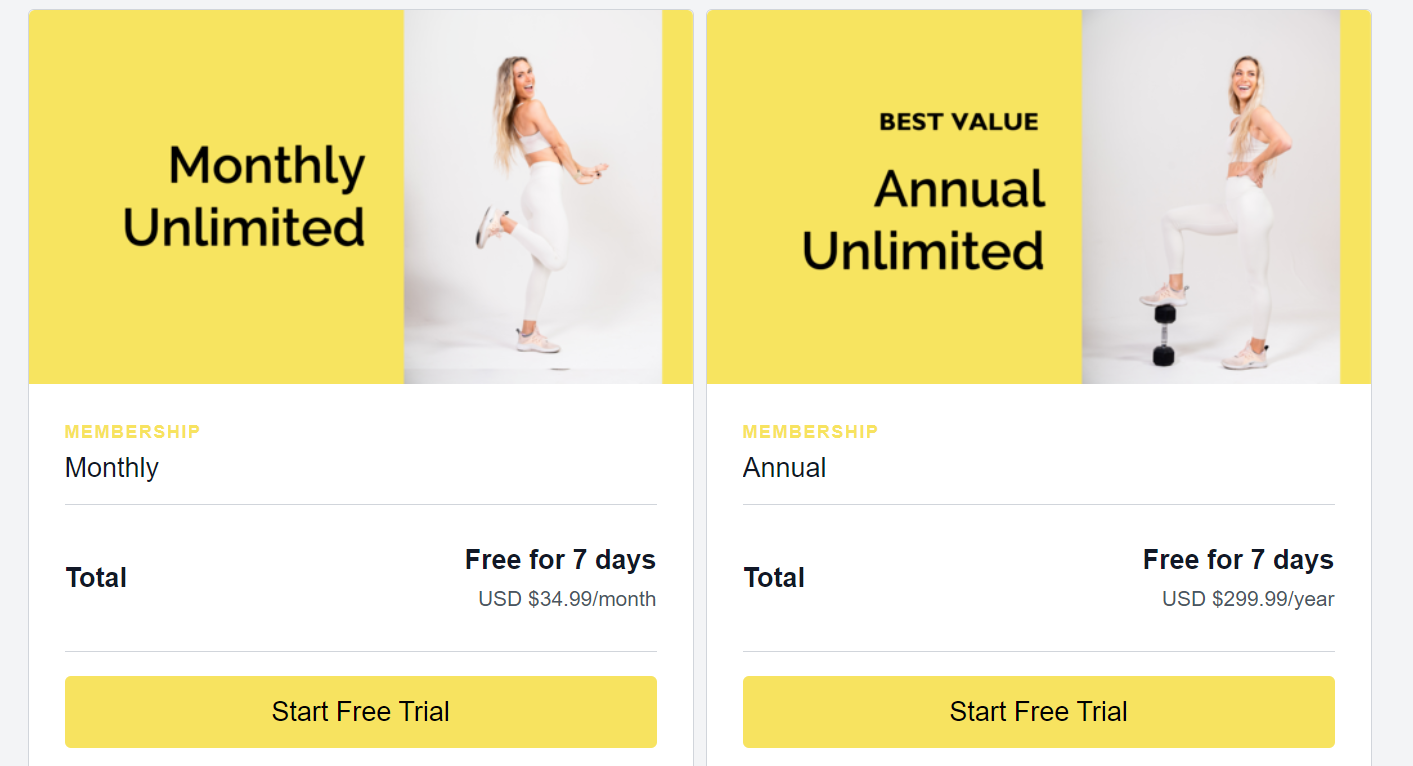
Or, you can make a one-off purchase for a premium video bundle if you’re just interested in one program:
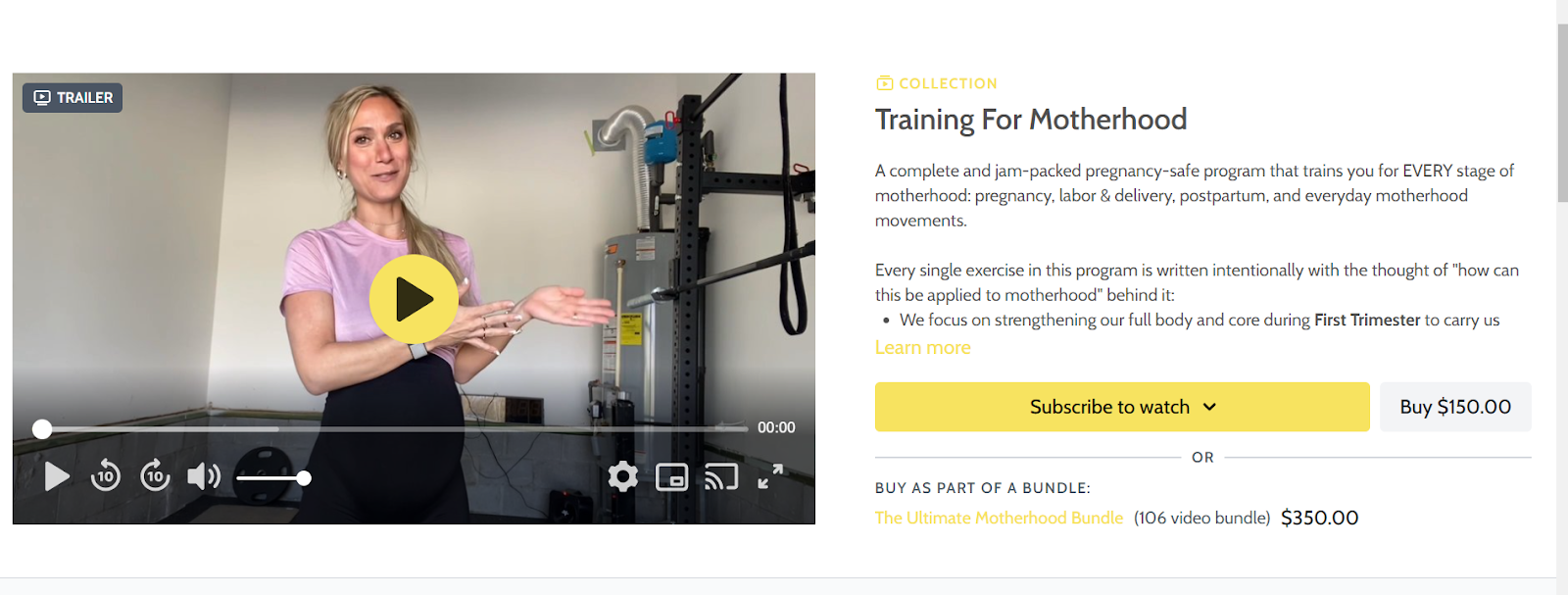
The hybrid monetization model is a useful way to upsell exclusive video content. Like the above example, you can buy Macey’s ‘Training for Motherhood’ course on its own, or there’s the option to spend more to receive a video bundle with additional relevant content. Plus, you could always choose to access this video by subscribing for a recurring fee.
- Membership
A membership model offers all the benefits of SVOD but with the added bonus of joining a community. Users can watch video content on demand, while connecting with other members.
Creators have lots of ways they can engage with their members too, like setting challenges or hosting member’s only events. It increases the customer lifetime value because users are getting more than just a streaming service, they’ve joining a community of like-minded people.
📖Check out how AdjusterTV Plus experienced a 409% increase in revenue by switching to the membership model.
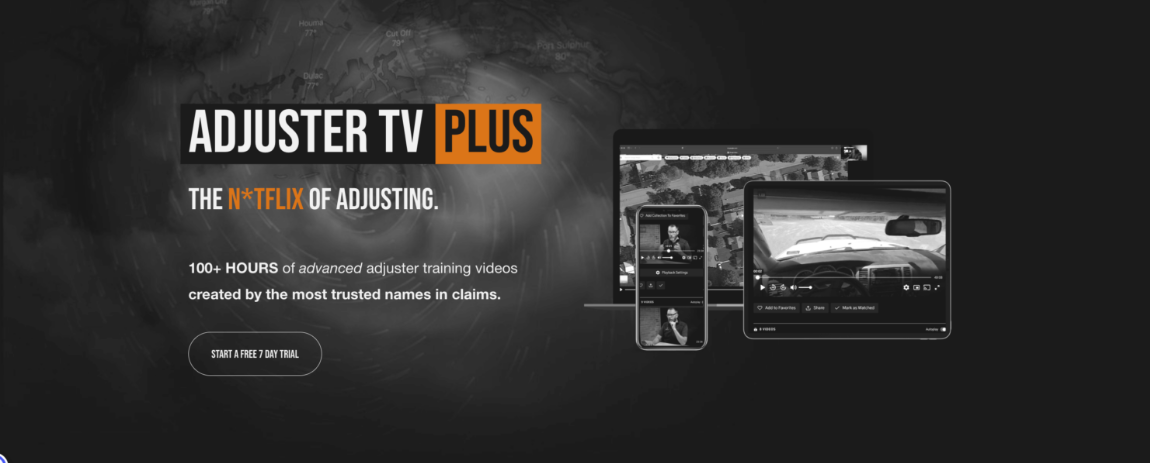
3 ways the OTT business model benefits creators like you
Whichever OTT monetization model you choose for your video business, there are lots of ways this can benefit you as a creator. Having freedom over what you create while making a stable income that offers an enviable user experience to inspire long-term growth and retention? Sounds pretty good to us!
If you agree, read on to look at these 3 benefits in more detail. 👇
Be in control of your content
Most OTT platforms earn money by users paying you directly as a subscriber or member (with the exception of AVOD). Launching your own OTT streaming platform means you’re in control of what you produce.
Rather than answering to the needs of advertisers, producers or traditional media gatekeepers; you have the freedom to share the video content you’re passionate about with the world.
Take Means TV for example. Their streaming service brings their own selection of film and TV to their subscribers, following a “by the people, for the people” ethos.
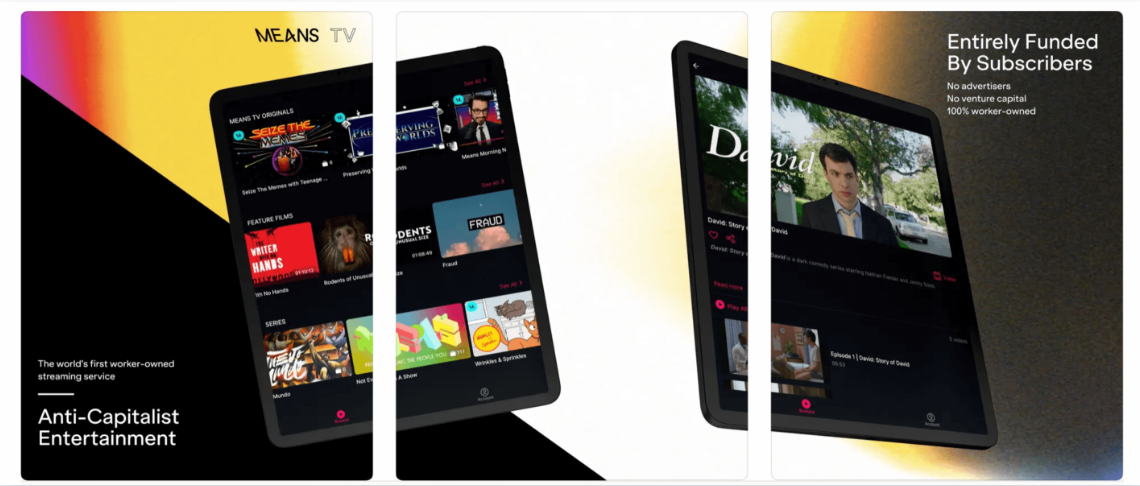
Apps gave us an air of legitimacy and got rid of any barriers to accessing the content. We’re available on all the same platforms as the big streaming services, and pose a real alternative option.
Means TV
They openly advertise the fact that they are independent from large platform owners and advertisers, bringing something different to the table while generating $40k+ a month in recurring revenue, using Uscreen as their OTT platform.
Grow your revenue stream
Online video consumption has become part of our daily lives. We all want the convenience of being able to binge watch our favorite shows as and when we please. And as OTT platforms become increasingly popular as a way of accessing content, there’s never been a better time to take advantage of the opportunities the OTT business model has to offer.
Here’s what the latest stats tell us:
- OTT revenue models for video content are predicted to generate US$316.40bn in 2024
- The number of users streaming content through OTT platforms and apps is set to increase by 25.46%, reaching approximately 997.9 million users by 2029
- Americans spend an average of 21 hours a week consuming OTT content
Having members pay you directly for an annual or monthly fee gives you a sustainable way to generate recurring revenue. Having your own app on offer sweetens the deal too.
Recent Uscreen data found that creators with branded apps sell 1.6x more annual subscriptions, and within the first 6 months of having an app, Uscreen customers see a 10% increase in user purchases.
Collective Kula moved from YouTube to an OTT revenue model with Uscreen. It’s now a flourishing membership generating $20K in monthly revenue with 640 active members.
📖 Read the full story to find out she did it 💡
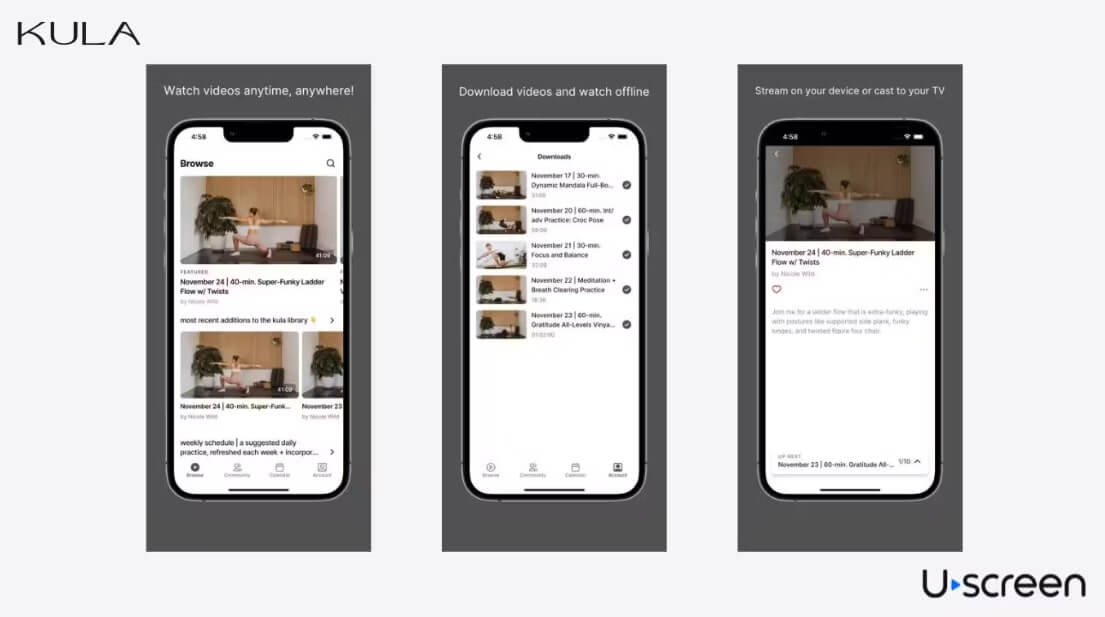
Improve user experience and retention
OTT platforms make for a better user experience for your members. The ability to make your content accessible through mobile and TV apps, and offer a custom-branded video platform meets users’ expectations and gives them the freedom to interact with your content however they like.
The hybrid model is useful for offering choice, while adding a membership is a great way to offer long term value to your customers by being part of an exclusive community. It opens up tons of possibilities for engaging with them, building a relationship and deeper connection that goes beyond passively consuming video content on demand.
Your Saltwater Guide is the perfect example of this. Dave and Eliot took their niche expertise in saltwater fishing to the masses by launching their own OTT platform with Uscreen.
Members can access the entire video library on demand, but what makes it special is the community aspect where they can share stories, interact with Dave, and be part of a like-minded group.
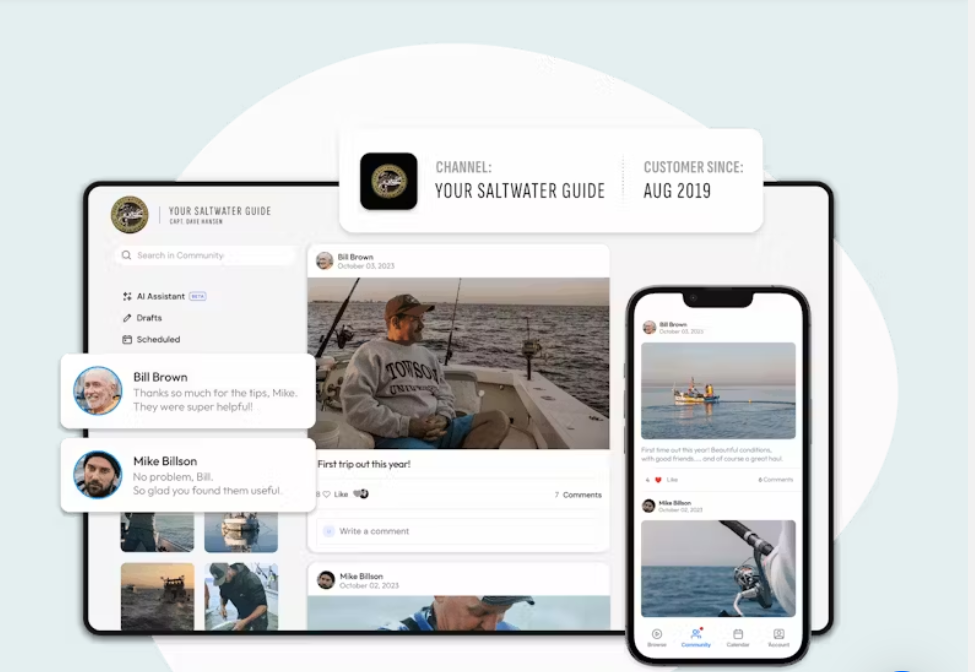
This has been incredibly successful for the brand, as it generates recurring revenue through loyal members, which in turn attracts new customers thanks to the abundance of glowing testimonials gathered from members.
How creators make money with Uscreen’s OTT business model
Uscreen is an all-in-one video monetization platform enabling creators to launch a premium streaming service for any device, without breaking the bank. We’ve helped over 4,000 creators launch their memberships and find success through the OTT business model.
One of those is Abundance+, a membership dedicated to homesteading which is filled with educational content and practical advice.
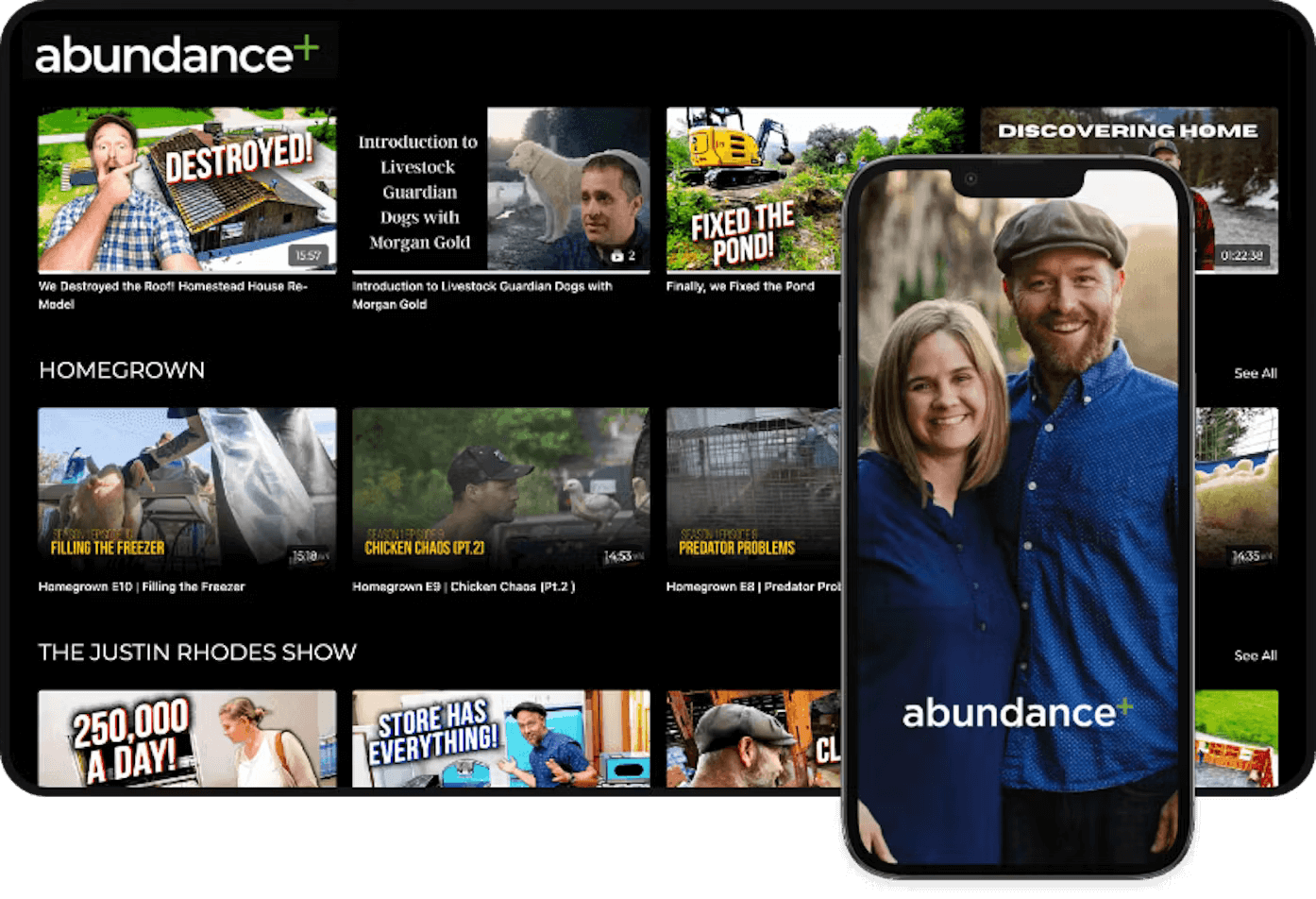
With 7,770 members and bringing in a whopping $1M+ in annual revenue, here’s how Uscreen’s OTT platform helped them to get there:
- Creating a branded app which is available on 6 difference devices, including Apple, Android and TV
- Providing an all-in-one platform with everything they needed to launch, including a website, native apps and community management
- Going beyond having a streaming service to creating an active community for like-minded members to connect
- Offering a Netflix-style streaming experience for users, meeting the expectation for high-quality, on-demand content
What Uscreen has done for the average creator has empowered them to not just have their own channel on YouTube — that’s empowering enough — but now they can have their own platform, their own YouTube, their own Facebook, their own community. They have a better sense of ownership and community.
Justin Rhodes, Founder of Abundance+
📖 Read the full story for more
💡Looking for inspiration? Here are 12 examples of successful OTT apps across a range of different niches.
Strategies for successful OTT monetization
Create a great membership experience
Providing the best possible experience for your members is crucial. No matter which monetization method you choose, your members should be able to smoothly navigate the journey from hitting subscribe, to renewing month after month and enjoy what they’re getting.
Start by planning out all the different stages your users go through during the signup process. Then once they’re in, look at how your content is organized.
Is it clear where to go? And how to find what they want?
Once they’re in, there’s lots of ways you can engage with your members. Putting on a live stream, planning an event, setting a challenge or just regularly posting inspiration in the community gives them a varied experience and multiple ways to connect with you.
Fittest Core shares their story on how they prioritized their members’ experience while migrating their platform and how this has helped them to continue to grow and gain success:
Since migrating to Uscreen, day-to-day operations have become much easier. As the business owner and the face of the company, it’s now simpler for me to engage with members directly. Whether they have questions about their form, need modifications, or are pregnant and unsure if an exercise is safe, it’s easy for them to contact me.
Macy Pruett, Founder of Fittest Core
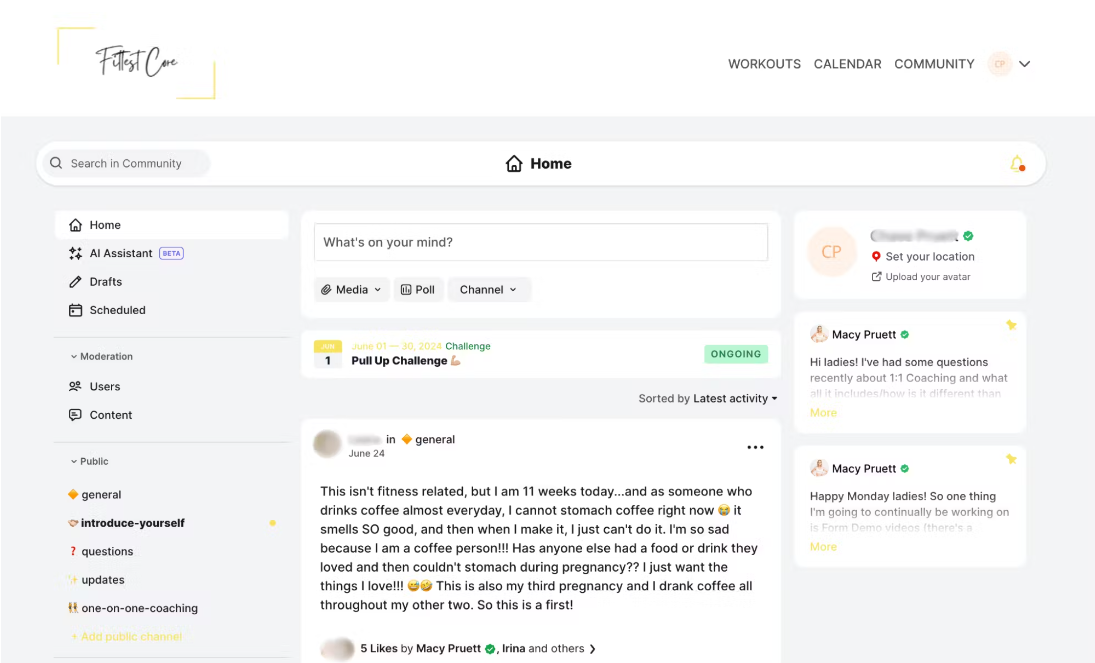
Launch your own OTT app
Offering customers your own app to access your membership and streaming service is a tried and tested way to generate revenue with an OTT platform. Apps make your content more accessible and attractive for members. It means they can watch on the go, or through their TV without issue.
The latest Uscreen data shows:
- When members use apps to watch video content, we see a 25% increase in watch time
- Creators see a 15% reduction in churn when they have their own app
- Up to 50% of live streams are watched on apps
- 78% of community activity happens in-app
In fact, basketball brand In The Lab doubled their viewership within one year by launching two mobile apps and now 78% of their video views come from their apps.
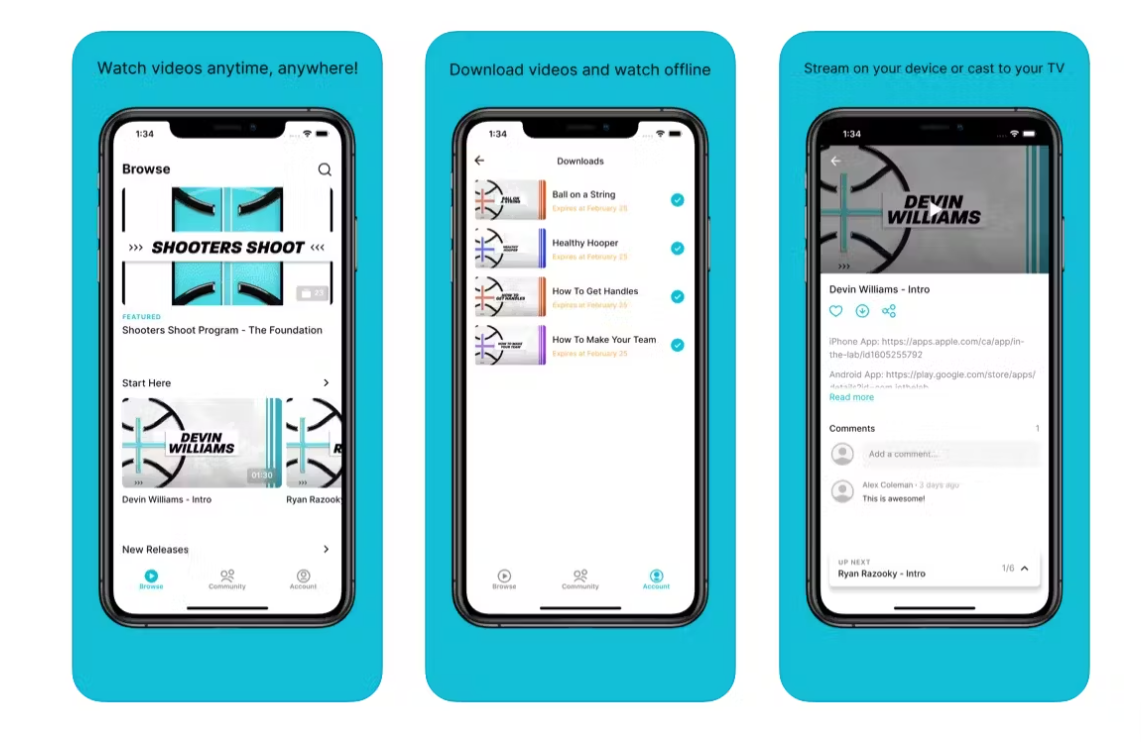
Have access to inbuilt marketing tools to reach your audience
Once you’ve chosen the video content monetization model that works for you and mapped out your membership experience, the next stage is to reach your target audience.
To do that, you’ll need the right messaging and tools to capture their attention. Many OTT platforms have inbuilt marketing tools to help you with this. So if you’re not a marketing whizz, or want to make the process quicker and easier, Uscreen has your back.
These tools are designed to help you boost revenue, and our data shows that creators who use them to their advantage experience a 2.5x increase in monthly income.
Setting up automations is one example of what you can do:
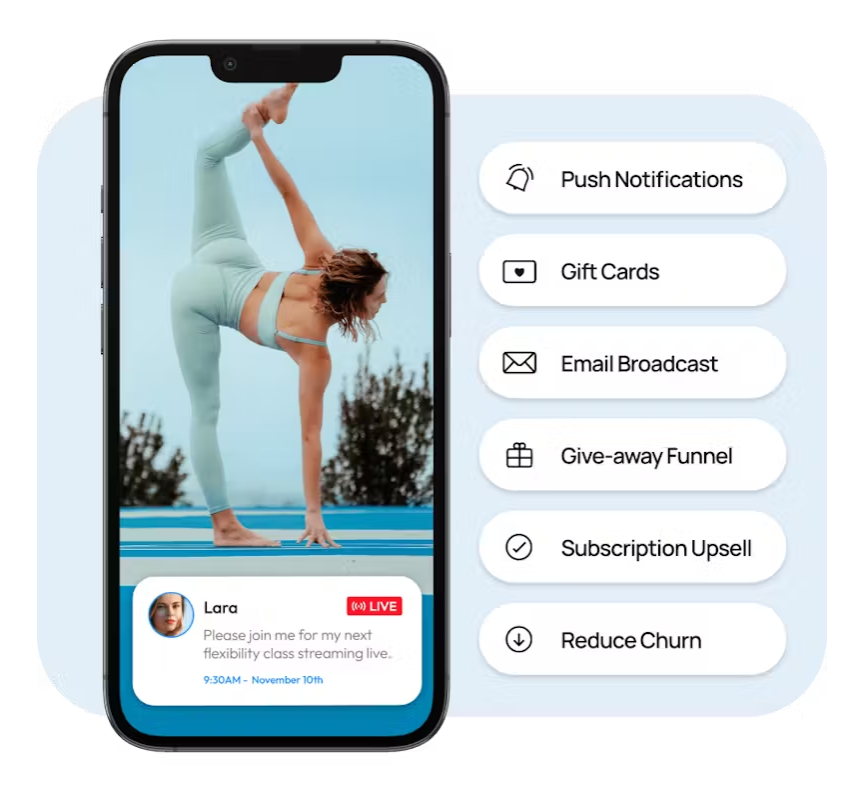
These are programs that will run automatically each time a customer, or prospect, completes a desired action. For example, if they express an interest in one of your videos, this could trigger an upsell for a subscription. Or you could set up an email to go out in the run up to the holidays with an offer for gift cards.
Being able to manage your marketing activity from your OTT platform saves a lot of time and it means you don’t have to jump between multiple platforms either to make the magic happen.
We can expand and scale the business without expanding our workload – plus, we can touch more people, be a part of more lives, and have a more profitable business.
Marnie Alton, Founder of M/Body
How to Choose The Best OTT Monetization Platform
There’s a lot to think about when choosing the right OTT monetization platform. You’ll find great advice in the video below on the three key factors to consider, which we’ve summarized here:
- The ability to reach your people wherever they are. This doesn’t just mean the way they access your content, but you also need the marketing tools so they can find it in the first place.
- The user experience. Giving your members the ability to control their experience through the app while making it intuitive, smooth and simple to use.
- Grow with your business. Be able to offer multiple ways to sell your content and diversify your revenue while having robust support in place to help you get to where you want to go.
And there we have it, your guide to all things OTT monetization. If you’re feeling inspired to take things to the next level, demo Uscreen to see first hand how the OTT business model works.
Build, launch and manage your membership, all in one place.






